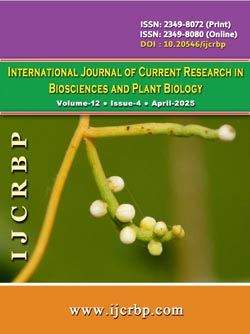 |
Online ISSN : 2349-8080 Issues : 12 per year Publisher : Excellent Publishers Email : editorinchiefijcrbp@gmail.com |
The Bandama River is the only river entirely located within Côte d'Ivoire, covering areas with different climatic and biogeographic characteristics. Various activities such as fishing, livestock farming, agriculture, electricity production, and mining impact its biodiversity. This study aims to assess the abundance of microalgae inhabiting the waters of the Bandama River. The study required direct water sampling using 250 ml bottles. Sampling campaigns were conducted each season from February to October 2013. The highest algal densities were recorded in Lake Taabo. The species Aphanocapsa elachista, Microcystis aeruginosa, Anabaena mucosa, Aulacoseira granulata var. angustissima, Dictyosphaerium pulchellum, and Pediastrum duplex var. gracillimum were the basis of this abundance. The lowest densities were observed at the Yékolo station. Rivers recorded high densities and chlorophyll a content during the short dry season, while lakes showed peak values during the long rainy season. Cyanoprokaryota and Chlorophyta were the most represented groups, accounting for 65.04% and 17.89%, respectively. The diversity indices indicate that the algal community is diverse in both lacustrine and fluvial environments. This study contributes to evaluating the impacts of anthropogenic activities on microalgae in Côte d'Ivoire.
